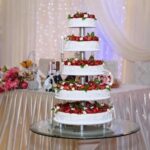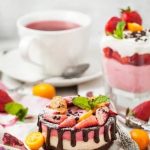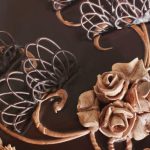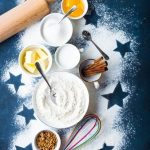Are you looking to elevate your baking skills and create beautiful, delicious cakes? One of the essential elements of cake decorating is the use of cake decorating cream.
Whether you’re a beginner or an experienced baker, mastering the art of making and using cake decorating cream can take your desserts to the next level. In this article, we’ll explore the different types of cake decorating creams, necessary ingredients and tools, step-by-step instructions for making buttercream frosting, tips and tricks for achieving the perfect consistency and color, as well as troubleshooting common issues.
When it comes to cake decorating cream, there are various types to consider. From classic buttercream to royal icing and fondant, each type offers unique characteristics that can be used to create stunning designs on your cakes. Understanding the differences between these creams and knowing how to work with them will enable you to bring your creative visions to life.
To get started with making your own cake decorating cream at home, you’ll need essential ingredients and tools that are readily available in most kitchens. Additionally, having a good understanding of the step-by-step process for making buttercream frosting is crucial for creating a versatile and delicious base for any cake decoration. Stay tuned as we delve into detailed instructions, tips, and techniques for using different types of cake decorating cream to achieve professional-looking results every time.
Types of Cake Decorating Cream (Buttercream, Royal Icing, Fondant, Etc)
When it comes to cake decorating, the type of cream or icing you choose to use can make all the difference in the final result. There are several types of cake decorating cream that are commonly used, each with its own unique properties and applications.
1. Buttercream: This type of frosting is a favorite for many home bakers due to its creamy texture and sweet flavor. It is made with butter, powdered sugar, and flavorings such as vanilla extract. Buttercream can be easily colored and piped into intricate designs.
2. Royal Icing: Royal icing is a smooth, hard-drying icing that is traditionally used for decorating gingerbread houses and creating intricate designs on cookies. It is made from powdered sugar, egg whites or meringue powder, and a little bit of water. Royal icing can be piped into delicate lace-like designs and dries to a glossy finish.
3. Fondant: Fondant is a pliable sugar paste that can be rolled out and draped over cakes for a smooth, seamless finish. It is popular for creating decorative accents such as flowers, bows, and other embellishments. Fondant can also be flavored and colored to match any cake design.
No matter which type of cake decorating cream you choose to use, it’s important to have the necessary ingredients and tools on hand to create your desired designs.
Necessary Ingredients and Tools for Making Cake Decorating Cream
When it comes to making cake decorating cream, there are a few essential ingredients and tools that you will need in order to achieve the best results. Whether you’re making buttercream frosting, royal icing, or working with fondant, having the right supplies is key to success.
Ingredients for Buttercream Frosting
The main ingredients for buttercream frosting include butter, powdered sugar, vanilla extract, and milk or heavy cream. It’s important to use room temperature butter and sifted powdered sugar to ensure a smooth and creamy texture. You can also add food coloring to achieve the desired color for your frosting.
Tools for Making Royal Icing
For making royal icing, you will need meringue powder or egg whites, confectioners’ sugar, lemon juice or cream of tartar, and water. In terms of tools, a stand mixer or handheld electric mixer is ideal for whipping up royal icing to the right consistency. Piping bags and tips are also necessary for creating intricate designs on your cakes and cookies.
Ingredients and Tools for Working With Fondant
If you’re planning to work with fondant for cake decorating, you’ll need fondant (either store-bought or homemade), powdered sugar or cornstarch for dusting your work surface, and a rolling pin. Fondant modeling tools may also come in handy if you want to create detailed decorations such as flowers or figures.
By ensuring that you have all the necessary ingredients and tools on hand before starting your cake decorating project, you set yourself up for success in creating beautiful and delicious treats.
Remember that choosing high-quality ingredients and investing in good quality tools can make a big difference in the outcome of your cake decorating endeavors.
Step-by-Step Instructions for Making Buttercream Frosting
Buttercream frosting is a classic choice for cake decorating due to its delicious flavor and versatility. To make your own buttercream frosting at home, you will need the following ingredients: 1 cup of unsalted butter, 4 cups of powdered sugar, 1 teaspoon of vanilla extract, and 2-3 tablespoons of heavy cream or milk.
To begin, soften the butter at room temperature until it is easily spreadable. In a mixing bowl, beat the softened butter with an electric mixer on medium speed until creamy. Gradually add in the powdered sugar, one cup at a time, mixing well after each addition. Once all the powdered sugar has been incorporated, add in the vanilla extract and continue to mix.
Next, add the heavy cream or milk to the mixture and beat on medium-high speed for another 3-5 minutes until the frosting becomes light and fluffy. If needed, adjust the consistency by adding more powdered sugar for a thicker frosting or more cream for a softer texture.
Once your buttercream frosting is ready, it can be used to decorate cakes, cupcakes, cookies, and more. This versatile frosting can also be colored using gel food coloring to create vibrant hues for various designs and decorations. Whether you’re piping flowers or spreading a smooth layer on a cake, buttercream frosting is an essential skill in any baker’s repertoire.
Tips and Tricks for Achieving the Perfect Consistency and Color
Cake decorating can be a fun and creative way to add a personal touch to your baked goods. One of the key elements in cake decorating is achieving the perfect consistency and color for your decorating cream. Whether you’re using buttercream, royal icing, or fondant, getting the right texture and hue is essential for creating beautiful designs.
When it comes to buttercream frosting, the key to achieving the perfect consistency is in controlling the amount of liquid you add. Start with a basic recipe of butter, powdered sugar, and vanilla extract, then gradually add milk or cream until you reach the desired texture. For color, gel food coloring works best as it won’t change the consistency of the frosting.
Royal icing can be a bit trickier to work with, but achieving the perfect consistency is crucial for intricate designs. The secret lies in finding the right balance of egg whites or meringue powder, powdered sugar, and water. Adding too much liquid can make the icing too runny, while too little will make it too stiff to pipe out delicate details.
For fondant, achieving the perfect color and texture involves kneading in just the right amount of food coloring and powdered sugar. It’s important to work quickly when coloring fondant as it can dry out easily. Once you have achieved your desired color, roll out the fondant evenly before using it for covering cakes or creating decorations such as flowers or figurines.
| Cake Decorating Cream Type | Tips for Achieving Perfect Consistency and Color |
|---|---|
| Buttercream Frosting | Control liquid added; Use gel food coloring |
| Royal Icing | Balance egg whites/powdered sugar/water; Be mindful of viscosity |
| Fondant |
How to Make and Use Royal Icing for Intricate Designs
Royal icing is an incredibly versatile and useful cake decorating cream that can be used to create intricate designs. It is a stiff, white icing that hardens to a smooth, shiny finish, making it perfect for decorating cookies, gingerbread houses, and intricate cake designs. In this section, we will provide step-by-step instructions on how to make royal icing and offer tips for using it to achieve beautiful designs on your baked goods.
To make royal icing, you will need just a few simple ingredients: confectioners’ sugar (powdered sugar), meringue powder or egg whites, and water. You can also add flavorings or food coloring to customize the taste and appearance of your royal icing. Once you have gathered your ingredients, you will also need a stand mixer or hand mixer, as well as piping bags and various piping tips for creating different designs.
To make the royal icing itself, simply combine the confectioners’ sugar and meringue powder in the bowl of a stand mixer fitted with the paddle attachment. Add in water gradually while mixing on low speed until the icing reaches your desired consistency. This can take anywhere from 5-7 minutes. Once the royal icing is made, transfer it to piping bags fitted with the desired tips and start decorating.
When using royal icing for intricate designs, it’s important to keep a few key tips in mind. First, make sure that your baked goods are completely cooled before applying the royal icing to prevent any melting. Additionally, practice proper piping techniques such as pressure control and steady hand movements to achieve clean lines and delicate details in your design.
Lastly, allow ample time for the royal icing to set and dry before handling or packaging your decorated treats. With these tips in mind, you’ll be able to create stunning and intricate designs using royal icing for all your baking projects.
| Ingredient | Tools |
|---|---|
| Confectioners’ sugar (powdered sugar) | Stand mixer or hand mixer |
| Meringue powder or egg whites | Piping bags |
| Water | Piping tips |
Creating Beautiful Designs With Fondant
Fondant is a versatile and popular choice for cake decorators looking to create beautiful and intricate designs. Whether you are making a wedding cake, birthday cake, or any other special occasion treat, fondant can add a professional touch to your creations. In this section, we will explore the process of making and using fondant for cake decorating.
Making Homemade Fondant
Making your own fondant at home is easier than you might think. All you need is some gelatin, water, corn syrup, glycerin, and confectioners’ sugar. The process involves dissolving the gelatin in water, adding the corn syrup and glycerin, and then gradually mixing in the confectioners’ sugar until a smooth dough forms. Once you have your fondant made, you can store it for future use by wrapping it tightly in plastic wrap and placing it in an airtight container.
Using Fondant to Decorate Cakes
When it comes to decorating with fondant, the possibilities are endless. You can cover an entire cake with fondant to create a sleek and polished look or use it to create 3D shapes like flowers, bows, or figurines. To apply fondant to a cake, start by covering the cake with a thin layer of buttercream frosting or piping gel to help the fondant adhere.
Then roll out the fondant on a clean surface dusted with powdered sugar until it’s large enough to cover your cake. Carefully drape the fondant over the cake and smooth out any air bubbles or wrinkles with a fondant smoother.
Coloring Fondant for Custom Designs
One of the best things about working with fondant is that you can easily customize its color to match any theme or design idea. To color your fondant, simply knead in small amounts of gel food coloring until you achieve your desired shade.
If you want multiple colors for decorations like flowers or accents, divide the fondant into smaller portions before adding color. Keep in mind that gel food coloring is best for tinting fondant as it won’t affect its consistency like liquid food coloring might.
Now that you have learned how to make and use homemade fondant for creating beautiful designs on cakes, you can take your decorating skills to the next level. Whether you are embellishing a simple sheet cake or crafting an elaborate tiered creation, incorporating fondant into your designs will surely impress anyone who sees – and tastes – your delicious works of art.
Decorating Techniques and Ideas for Using Cake Decorating Cream
When it comes to decorating cakes, the possibilities are endless with cake decorating cream. Whether you’re using buttercream, royal icing, or fondant, there are various techniques and ideas you can use to create stunning designs on your cakes.
One popular technique for using buttercream frosting is the classic piping method. This involves using pastry bags and different tips to pipe out various designs such as rosettes, swirls, stars, and even intricate floral patterns. You can also use a spatula to create a smooth finish or textured look on the cake.
Royal icing is often used for intricate designs that require fine detail work. This type of icing can be used for delicate lace patterns, intricate borders, and even intricate flowers. It dries hard and is perfect for creating designs that need to hold their shape.
Fondant offers a different approach to cake decorating, allowing you to create smooth, clean finishes on your cakes. You can roll out fondant and drape it over the cake for a sleek look or use cut-outs and molds to add decorative elements to your design. The versatility of fondant makes it a popular choice for creating custom shapes or characters for themed cakes.
Overall, there are countless ways you can use cake decorating cream to elevate the appearance of your cakes. Whether you’re a beginner or experienced decorator, experimenting with different techniques and ideas will help you create beautiful and unique designs that are sure to impress.
Troubleshooting Common Issues With Cake Decorating Cream
When it comes to cake decorating, using the right cream for your designs is crucial. However, even the most experienced bakers can run into issues with their cake decorating cream. From consistency problems to color mishaps, troubleshooting common issues with cake decorating cream is essential for achieving professional-looking results.
One common issue that bakers often encounter when working with cake decorating cream is the consistency of the frosting. If your buttercream or royal icing is too thin and runny, it can be difficult to work with and may not hold its shape when piping onto the cake. On the other hand, if the frosting is too thick, it can be challenging to spread evenly and may result in an unattractive finish on your cakes.
To troubleshoot these consistency issues, you can adjust the amount of liquid or powdered sugar in your frosting recipe. If your frosting is too thin, gradually add more powdered sugar until you reach a thicker consistency. Conversely, if your frosting is too thick, slowly incorporate small amounts of liquid (such as milk or water) until you achieve the desired consistency.
Another common problem that arises when working with cake decorating cream is achieving the perfect color. Whether you’re trying to create vibrant hues or pastel shades, getting the color just right can be a challenge.
To avoid this issue, make sure to use gel-based food coloring rather than liquid food coloring, as it provides more intense colors without compromising the consistency of your frosting. Additionally, start with a small amount of food coloring and gradually add more until you achieve the desired shade.
In addition to consistency and color issues, bakers may also encounter problems such as air bubbles in their buttercream frosting or fondant that cracks when rolled out. By familiarizing yourself with these troubleshooting techniques and implementing them into your cake decorating process, you can ensure that every confection you create looks as beautiful as it tastes.
Conclusion and Final Tips for Successful Cake Decorating
In conclusion, cake decorating cream is an essential element in creating beautiful and delicious cakes. Whether you prefer buttercream, royal icing, or fondant, there are various types of cake decorating cream to suit your preferences and design needs. By using the right ingredients and tools, you can easily whip up a batch of your favorite cake decorating cream at home.
When making buttercream frosting, it’s important to follow the step-by-step instructions to achieve the perfect consistency and color. Additionally, using royal icing for intricate designs and creating beautiful designs with fondant can elevate the visual appeal of your cakes. Experimenting with different decorating techniques and ideas can also help you unleash your creativity and bring your cake designs to life.
For those who may encounter common issues with cake decorating cream, such as lumps or air bubbles, troubleshooting tips can save the day. Overall, mastering the art of cake decorating cream takes practice but with patience and dedication, anyone can become a successful cake decorator. So go ahead, explore the world of cake decorating cream and let your imagination run wild.
Frequently Asked Questions
What Is the Best Cream for Cake Decorating?
The best cream for cake decorating is typically buttercream or fondant. Buttercream is versatile and easy to work with, while fondant provides a smooth, polished look for more intricate designs.
Which Cream Is Used for Decorating Cake?
The cream commonly used for decorating cakes is buttercream. This creamy mixture of butter, powdered sugar, and flavorings like vanilla or almond extract can be easily colored and piped into various designs.
What Is Cake Cream Made Of?
Cake cream, also known as buttercream, is made of simple ingredients such as butter, powdered sugar (or icing sugar), and flavorings. Some recipes may also include a small amount of milk or heavy cream to achieve the desired consistency.

Welcome to our cake decorating blog! My name is Destiny Flores, and I am the proud owner of a cake decorating business named Cake Karma. Our mission is to provide delicious, beautiful cakes for all occasions. We specialize in creating custom cakes that are tailored specifically to each customer’s individual needs and tastes.





